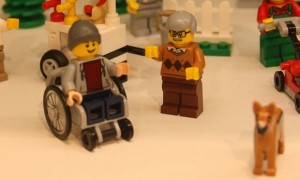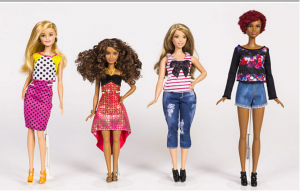Watch “The Present”
Posted on February 15, 2016 at 8:00 am
This is a lovely film — highly recommended for all families.
Posted on February 15, 2016 at 8:00 am
This is a lovely film — highly recommended for all families.
Posted on January 28, 2016 at 11:22 am

This is progress. Barbie dolls will now come in diverse shapes, skin colors, and sizes, including petite and curvy. And LEGO is introducing disabled characters, including one in a wheelchair.

It is wonderful that children will be able to play with toys that reflect and validate their own lives and the world around them.
Posted on October 25, 2015 at 3:57 pm

Posted on August 14, 2015 at 10:24 am
A new study from USC’s Annenberg School for Communications and Journalism documents the vastly over-proportionate portrayals of white males on film and in filmmaking. Their review of 700 top-grossing films from 2007-2014 found:
Gender. Only 30.2% of the 30,835 speaking characters evaluated were female across the 700 top‐grossing films
from 2007 to 2014. This calculates to a gender ratio of 2.3 to 1. Only 11% of 700 films had gender‐balanced casts
or featured girls/women in roughly half (45‐54.9%) of the speaking roles.
Race/Ethnicity. Of those characters coded for race/ethnicity across 100 top films of 2014, 73.1% were White, 4.9% were Hispanic/Latino, 12.5% were Black, 5.3% were Asian, 2.9% were Middle Eastern, <1% were American Indian/Alaskan Native or Native Hawaiian/Pacific Islander, and 1.2% were from “other” racial and/or ethnic groupings. This represents no change in the portrayal of apparent race/ethnicity from 2007‐2014.
LGBT. Across 4,610 speaking characters in the 100 top films of 2014, only 19 were Lesbian, Gay or Bisexual. Not one Transgender character was portrayed. Ten characters were coded as Gay, 4 were Lesbian, and 5 were Bisexual. Only 14 movies sample wide featured an LGB depiction and none of those films were animated. Of the LGB characters coded, nearly two‐thirds were male (63.2%) and only 36.8% were female. LGB characters were also predominantly White (84.2%). Only 15.8% were from underrepresented racial/ethnic backgrounds.
Behind the scenes is even worse.
The landscape of popular cinema in 2014 remains skewed and stereotypical. Across 700 films and over 30,000 speaking characters from 2007 to present, movies continue to distort the demographic reality of their audience. Film characters are overwhelmingly White and male, despite both population statistics and viewing patterns.
Employment trends behind the camera evidence a similar dearth of diversity. Only five Black directors helmed top movies in 2014, and women were underrepresented by a factor of 5.3 to 1 as directors, writers, and producers in 2014. Further, the 100 top films of 2014 featured no Asian directors. Despite activism, attention, and statements about addressing the issue, Hollywood’s default setting for characters and content creators remains fixed on “status quo.”
Posted on July 8, 2015 at 12:23 pm
I love the way Wil Wheaton sort of plays himself on “The Big Bang Theory.” The characters interact with him as Wil Wheaton, Wesley Crusher from “Star Trek: TNG” and star of “Stand By Me” (and “Serial Apeist 2”). But the “Wil Wheaton” character, especially in the first few appearances, was arrogant and mean, a fitting “nemesis” for Sheldon Cooper, played by Jim Parsons.
Real-life Wil Wheaton is a proud fanboy and hero of nerd culture. He was one of the first celebrities on Twitter (@wilw), with more than 2.8 million followers.
And real-life Wil Wheaton has some mental illness issues. In a video for UROK, a non-profit group that helps teens understand mental illness, he talks about his anxiety and depression.
“You are not the only person in the world who has anxiety. You are not the only person in the world who has depression. You’re not the only person in the world who has thoughts of self-harm. There are people who want to help you. There are people who have spent their entire lives helping people like you and me and all of the people that you’re seeing in this video. And you’re not alone. You are okay.”
It is so easy for teenagers and even adults to think we are alone in our moments of sadness and fear. Many thanks to Wil Wheaton for his generosity and courage in sharing his story.
Project UROK invites everyone to share a video.
Project UROK is a nonprofit organization founded in 2014 by Jenny Jaffe. Their mission is “to create funny, meaningful videos for teenagers struggling with mental health issues, made by people who have been there before, to provide not only practical assistance, but also a sense of belonging, a sense of comfort, and a sense of hope.